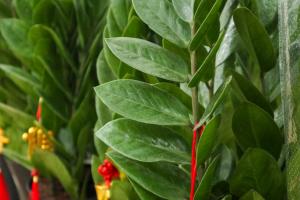What Do All Plant Life Cycles Have in Common?
Plants are essential components of our ecosystem and play a critical role in supporting life on our planet. They come in a wide variety of forms, from towering trees to delicate flowers, but all plants share certain biological characteristics that define their life cycles. In this article, we will examine what all plant life cycles have in common.
The Importance of Photosynthesis
All plant life cycles begin with photosynthesis. This process involves the absorption of light energy, which is converted into chemical energy that plants use to create their own food. During photosynthesis, plants take in carbon dioxide from the air and water from the soil. They then use the energy from the sun to combine these substances and produce glucose, a type of sugar that serves as the plant's primary source of energy. This process is critical for plant growth and is the foundation for all plant life cycles.
The Role of Reproduction in Plant Life Cycles
One of the most significant characteristics of plant life cycles is the process of reproduction. Plants reproduce through a variety of methods, including seed production, vegetative propagation, and spore formation. In all cases, the goal of reproduction is to create new individuals that can continue the species. In seed production, for example, the plant produces seeds that contain the genetic material necessary to create a new plant. When conditions are right, the seed will germinate, and a new plant will grow. This process is critical for the survival of plant species and is an essential component of all plant life cycles.
The Importance of Adaptation
Another important characteristic of plant life cycles is their ability to adapt to changing environmental conditions. Plant species have evolved over millions of years to thrive in different environments, from rainforests to deserts. They have developed a variety of strategies to survive in these different habitats, including the ability to store water, produce thick waxy leaves, or grow long taproots. This adaptability is critical to the success of all plant life cycles, as it allows plants to thrive in new and challenging environments.
Conclusion
In conclusion, all plant life cycles share certain fundamental characteristics, including photosynthesis, reproduction, and adaptation. These processes are critical for the survival of plant species and have allowed plants to evolve and thrive in a wide range of environments. Understanding these commonalities can help us appreciate the essential role that plants play in our ecosystem and inspire us to protect and preserve them for future generations.

 how many times do yo...
how many times do yo... how many planted tre...
how many planted tre... how many pine trees ...
how many pine trees ... how many pecan trees...
how many pecan trees... how many plants comp...
how many plants comp... how many plants can ...
how many plants can ... how many plants and ...
how many plants and ... how many pepper plan...
how many pepper plan...





























